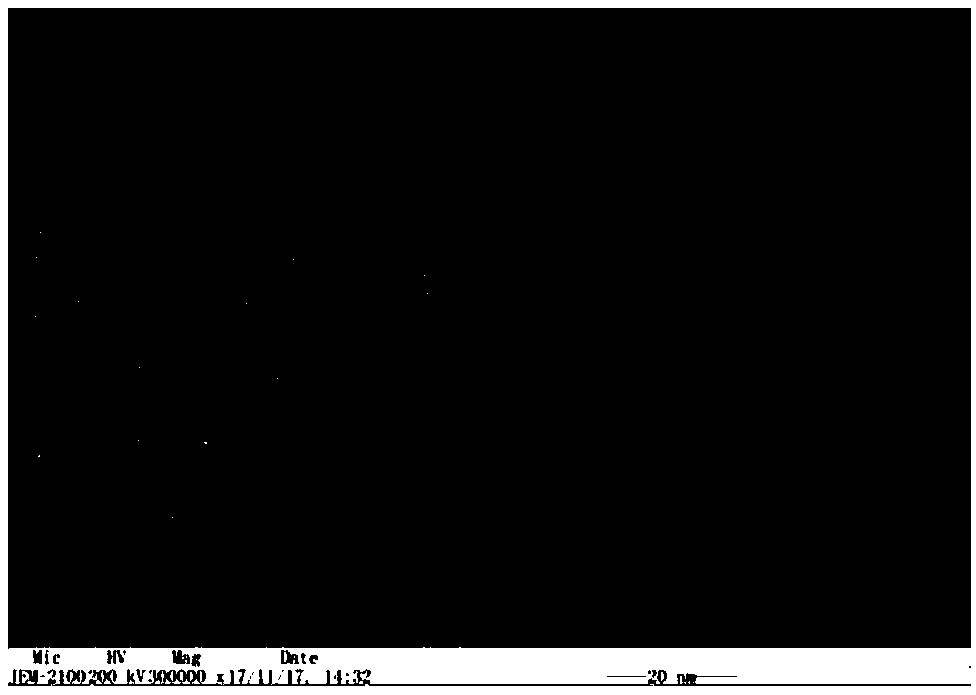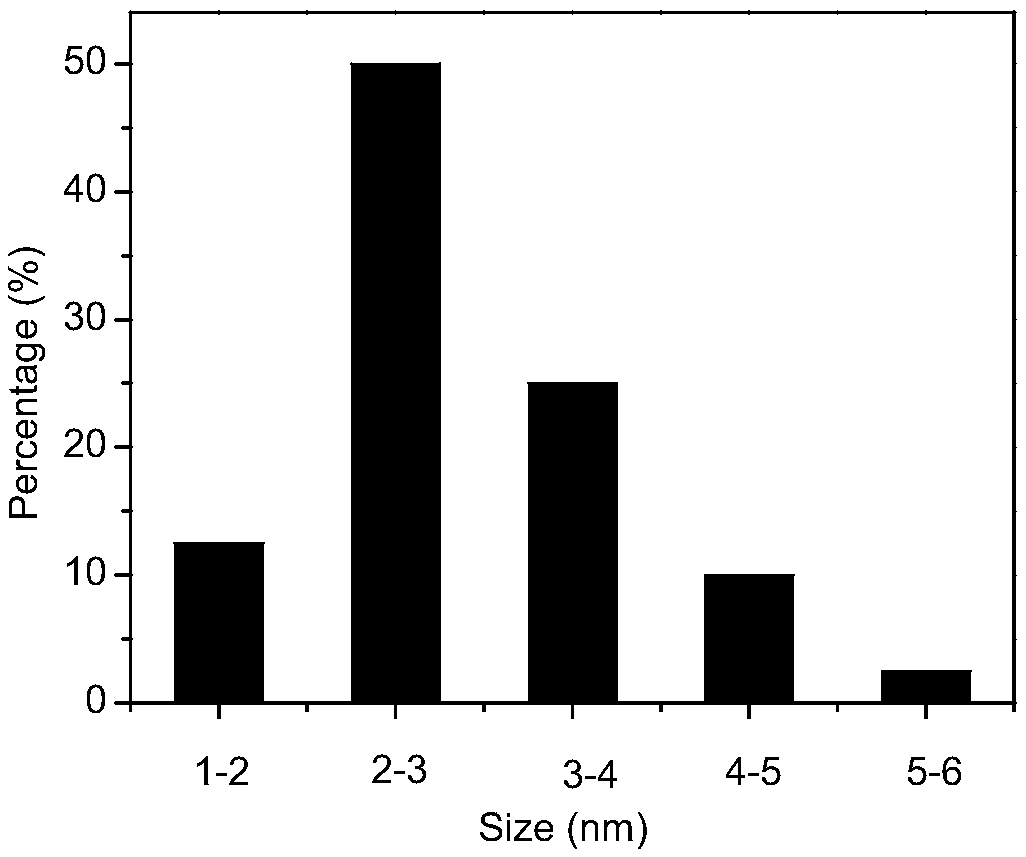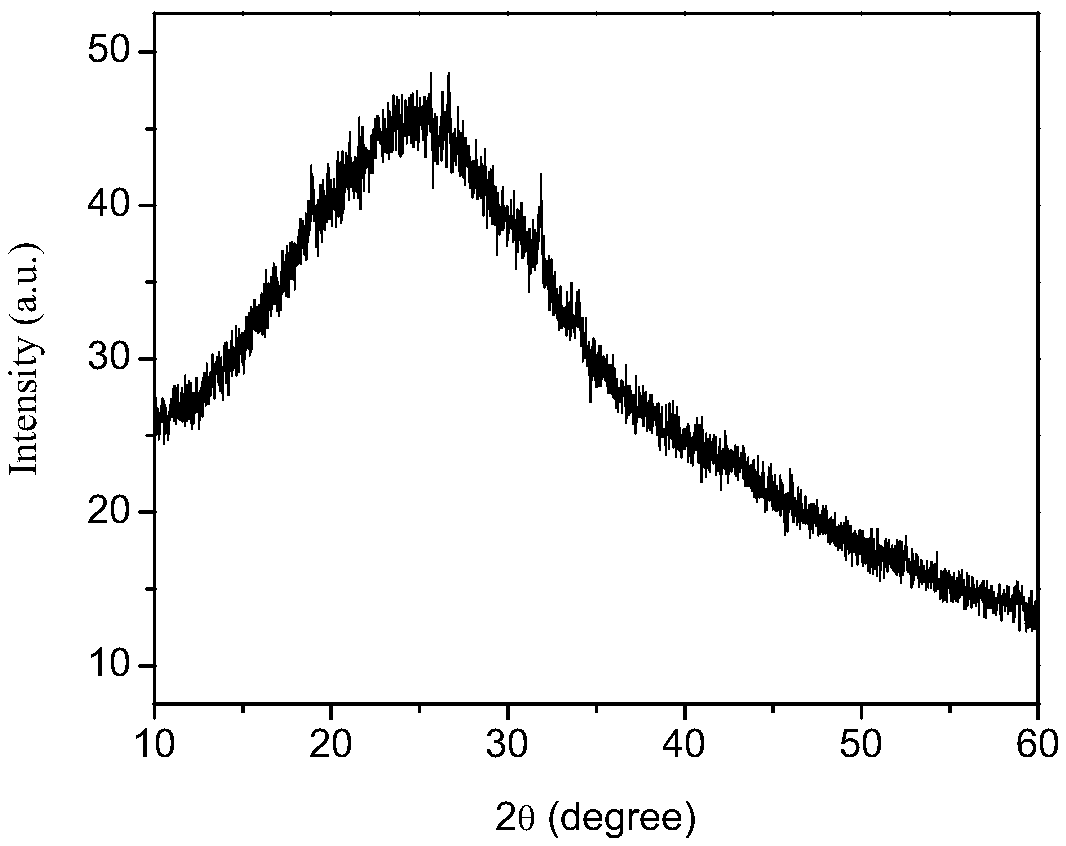Nitrogen-sulfur codoped fluorescent carbon dots with high quantum yield as well as preparation method and application of nitrogen-sulfur codoped fluorescent carbon dots
A nitrogen-sulfur co-doping, fluorescent carbon dot technology, applied in fluorescence/phosphorescence, chemical instruments and methods, nano-optics, etc., can solve the problems of unclear luminescence mechanism, complex preparation process, low fluorescence quantum yield, etc. Good water solubility, simple preparation method, mild and controllable reaction conditions
- Summary
- Abstract
- Description
- Claims
- Application Information
AI Technical Summary
Problems solved by technology
Method used
Image
Examples
Embodiment 1
[0039] (1) Preparation method of nitrogen-sulfur co-doped fluorescent carbon dots with high quantum yield
[0040] Put 0.30g of tartaric acid and 0.50g of L-cysteine in a polytetrafluoroethylene reactor, and after hydrothermal reaction at 210°C for 5 hours, cool down to room temperature naturally, add 20mL of ultrapure water to dissolve, and then use Filter with filter paper, centrifuge (10000rpm, 10min), then filter with a 0.22μm filter head, and finally perform dialysis to obtain a brown nitrogen-sulfur co-doped fluorescent carbon dot solution. Put the carbon dot solution under the irradiation of 365nm ultraviolet lamp, and it can be observed that the carbon dot solution emits bright blue fluorescence. The carbon dot solution is freeze-dried to obtain fluorescent carbon dot solid powder.
[0041] The carbon dot solution prepared in this example uses quinine sulfate as a standard substance, and the fluorescence quantum yield of the carbon dot can be measured to be 19.1%. ...
Embodiment 2
[0054] Example 2 Application of nitrogen and sulfur co-doped fluorescent carbon dots in fingerprint detection
[0055] Take 0.5g of starch and 1mL of the fluorescent carbon dot aqueous solution prepared in Example 1 with a concentration of 100μg / mL. After mixing, add 5mL of acetone, stir evenly, and then sonicate for 2h to obtain a paste, dry it at 60C°, and use agate Grind into powder in a mortar and set aside. After that, use a special fingerprint brush for criminal investigation to evenly shake the above powder onto the glass sheet with fingerprints, and then brush along the fingerprint lines to display. After removing excess powder, take a fingerprint image under the irradiation of a 365nm ultraviolet lamp. Such as Figure 12 As shown, the fluorescent carbon dots showed a clear fingerprint image under the irradiation of 365nm ultraviolet light.
Embodiment 3
[0056] Example 3 Nitrogen and sulfur co-doped fluorescent carbon dots in Hg 2+ Applications in testing
[0057] In 2mL concentration of 150μg / mL fluorescent carbon dot aqueous solution prepared in Example 1, add 1mL (pH5.91) phosphate buffer solution, then add gradient volume of Hg 2+ solution, stirred evenly and reacted for 5 minutes, and scanned the fluorescence spectrum to obtain Figure 13 . Depend on Figure 13 It can be seen that with Hg 2+ Continuously adding, the fluorescence intensity of carbon dots gradually decreases, and there is a good linear relationship in the range of 50-125 μg / mL, and the linear equation is F=0.396[Hg 2+ ]+147.5, correlation coefficient R 2 =0.996, the detection limit was 5.69 μg / mL. The detection method is easy to operate and has high sensitivity. It is an excellent Hg 2+ fluorescent probe.
PUM
| Property | Measurement | Unit |
|---|---|---|
| particle diameter | aaaaa | aaaaa |
Abstract
Description
Claims
Application Information
 Login to View More
Login to View More - R&D
- Intellectual Property
- Life Sciences
- Materials
- Tech Scout
- Unparalleled Data Quality
- Higher Quality Content
- 60% Fewer Hallucinations
Browse by: Latest US Patents, China's latest patents, Technical Efficacy Thesaurus, Application Domain, Technology Topic, Popular Technical Reports.
© 2025 PatSnap. All rights reserved.Legal|Privacy policy|Modern Slavery Act Transparency Statement|Sitemap|About US| Contact US: help@patsnap.com



